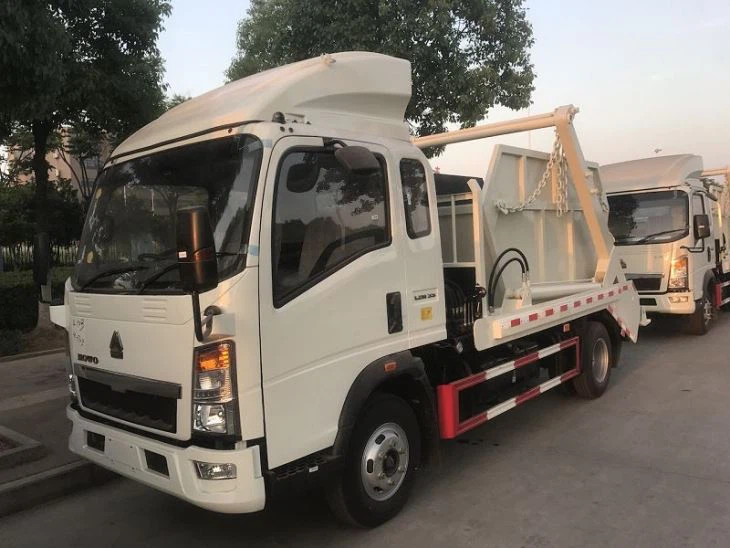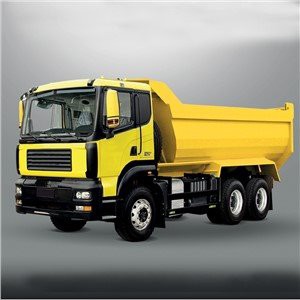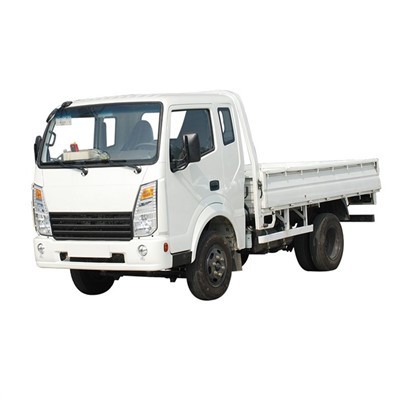Understanding the Importance and Functionality of Road Cleaning Trucks

Road cleaning trucks are essential vehicles that help maintain the cleanliness of our streets and highways. These specialized trucks play a crucial role in urban sanitation, contributing to public health, environmental protection, and aesthetics. In this article, we will delve into the various aspects of road cleaning trucks, including their types, features, benefits, and best practices for their use. We will also answer some frequently asked questions to give you a comprehensive understanding of this vital machinery.
What is a Road Cleaning Truck?
A road cleaning truck is a specialized vehicle designed for street cleaning. These trucks are equipped with various cleaning mechanisms to remove dirt, debris, leaves, litter, and other pollutants from road surfaces. Road cleaning trucks help keep urban environments clean, promote safety for pedestrians and drivers, and enhance the overall appearance of cities.
Types of Road Cleaning Trucks
1. Vacuum Street Sweepers
Vacuum street sweepers are among the most common types of road cleaning trucks. These vehicles utilize a powerful suction system to remove debris from the streets. They often come with rotating brushes that agitate dirt and debris before suctioning it up. Vacuum sweepers are efficient for cleaning fine dust, litter, and leaves.
2. Mechanical Sweepers
Mechanical sweepers operate with a brushing system that collects debris and deposits it into a hopper. They are particularly effective in removing larger pieces of debris from the road surface, such as rocks and heavy litter. Mechanical sweepers can often be found in parks, parking lots, and areas with significant litter accumulation.
3. Water Trucks
Water trucks are used in conjunction with street cleaning operations, especially in dusty areas. These trucks spray water on the road surface to minimize dust and can be used in conjunction with other cleaning equipment. They are particularly useful in agricultural or construction zones where dust control is critical.
4. Employee-Controlled Sweepers
Employee-controlled sweepers are smaller-sized, self-contained machines used for cleaning sidewalks, bike paths, and parking lots. They are versatile and can often be operated manually or by a trained operator.
Key Features of Road Cleaning Trucks
1. Suction Systems
Most modern road cleaning trucks are equipped with advanced suction systems that enhance their cleaning capabilities. The suction system helps clear debris efficiently and minimizes dust dispersal during the cleaning process.
2. Agitating Brushes

Road cleaning trucks often include rotating brushes that can effectively agitate dirt and debris, making it easier for the suction system to collect it. These brushes help in cleaning hard-to-reach areas and ensure thorough cleaning.
3. Efficient Waste Storage
Road cleaning trucks come with enclosed hoppers for waste storage, ensuring that collected debris is contained and preventing it from scattering back onto the road surface. Most hoppers can be emptied easily at disposal sites.
4. Water Tanks
Some models are outfitted with water tanks to wet down streets, reducing dust and improving cleanliness. These tanks can be critical in drier climates where dust control is necessary.
5. Safety Features
Many road cleaning trucks incorporate safety features such as audible alarms, backup cameras, and proper lighting to enhance visibility while cleaning and ensure safety for both the operators and pedestrians.
Benefits of Using Road Cleaning Trucks
1. Improved Public Health
Road cleaning trucks help reduce the accumulation of debris and litter on roads, which can harbor pests and lead to health hazards. By maintaining cleaner streets, we promote better public health for residents.
2. Enhanced Aesthetics
Clean streets enhance the visual appeal of neighborhoods and cities, contributing to a better living environment and potentially increasing property values. Visitors tend to have a more favorable impression of clean communities.
3. Environmental Protection
By removing pollutants from road surfaces, road cleaning trucks help protect water sources from contamination caused by debris and toxins. This role is vital for maintaining ecosystems and ensuring sustainable urban environments.
4. Increased Road Safety

Debris on roads can create hazards for drivers and pedestrians. Regular cleaning helps improve traction on road surfaces and prevents accidents caused by unexpected obstacles.
Best Practices for Operating Road Cleaning Trucks
1. Regular Maintenance
Proper maintenance of road cleaning trucks is essential for ensuring efficient operation. Regularly check and service suction systems, brushes, and water tanks to maximize performance.
2. Training Operators
Trained operators ensure that road cleaning trucks are utilized effectively. Proper training should cover vehicle operation, maintenance checks, and safety protocols.
3. Scheduling Cleaning Routines
Establishing a regular cleaning schedule can significantly enhance the effectiveness of road cleaning efforts. This routine should consider peak traffic hours and local events that may impact street use.
4. Utilizing Technology
Implementing GPS tracking and route optimization software can help in planning more efficient cleaning routes, ultimately saving time and resources.
5. Community Involvement
Encouraging community involvement and awareness about street cleanliness can create a culture of care and responsibility among residents, making them more likely to contribute to maintaining clean streets.

Cost Factors in Road Cleaning Truck Operations
1. Purchase and Operating Costs
The initial investment in road cleaning trucks can be substantial, factoring in purchasing costs, maintenance, fuel, and other operational expenses. Planning a budget that considers all these elements is essential for effective management.
2. Labor Costs
Labor costs associated with skilled operators and support staff must also be included in the overall operational budget. Investing in training can yield dividends in efficiency and safety.
3. Technological Integration Costs
While integrating new technology may involve upfront costs, it can lead to long-term savings through improved efficiency and reduced manual labor.
Innovations in Road Cleaning Technology
1. Electric Street Sweepers
Electric-powered road cleaning trucks are gaining popularity as they are quieter and produce zero emissions, contributing to reduced air pollution and noise levels in urban areas.
2. Automated Sweeping Technology
Advancements in robotics and automation are leading to the development of self-driving street cleaning trucks that can operate independently, potentially reducing labor costs and improving efficiency.
3. Smart Sensors
Incorporating smart sensors into road cleaning trucks can optimize cleaning schedules based on real-time data, such as weather and traffic patterns, promoting more effective use of resources.
Choosing the Right Road Cleaning Truck for Your Needs
1. Consider the Area to be Serviced
Analyze the specific cleaning requirements based on the type of surfaces, debris encountered, and the area size. This evaluation will help determine the most suitable truck type.
2. Identify Your Budget
Understand your budget constraints and weigh them against the potential benefits of each truck model. Assess both initial purchase prices and long-term operational costs.
3. Evaluate Features and Capabilities
Consider what features are essential for your cleaning operations. For instance, if the area is prone to heavy litter, a mechanical sweeper may be ideal, whereas a vacuum street sweeper could work better for dust and fine debris.
Frequently Asked Questions (FAQ)
1. How often should road cleaning trucks be used?
Frequency depends on the area and debris accumulation. Busy urban areas might require daily cleaning, while less trafficked zones could be serviced weekly.
2. Are road cleaning trucks environmentally friendly?
Many modern road cleaning trucks are designed with eco-friendly features, including water-efficient systems and electric models that reduce emissions.
3. What is the average lifespan of a road cleaning truck?
The lifespan of road cleaning trucks can vary, but with proper maintenance, they can last around 10 to 15 years.
4. How can municipalities fund road cleaning truck operations?
Funding can come from budget allocations, grants, and partnerships with local businesses or organizations that prioritize community cleanliness.
5. Can road cleaning trucks operate in different weather conditions?
Most road cleaning trucks are designed to operate in various weather conditions, but performance may be affected in extreme weather, like heavy rain or snow.
6. What should be done if a road cleaning truck breaks down?
Establish a contingency plan that includes access to backup vehicles, scheduled maintenance checks, and quick repair services to minimize downtime.
